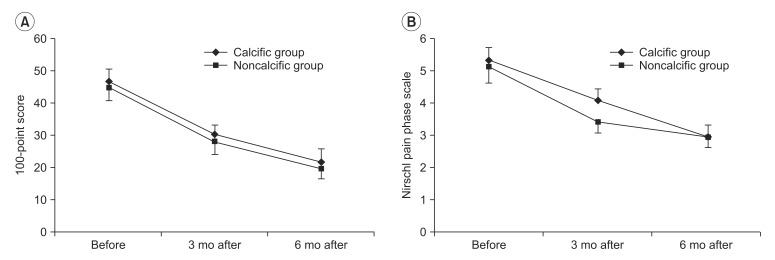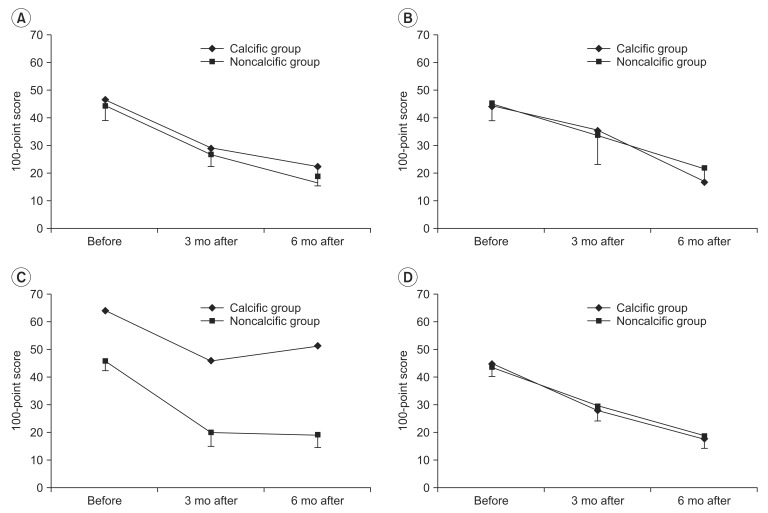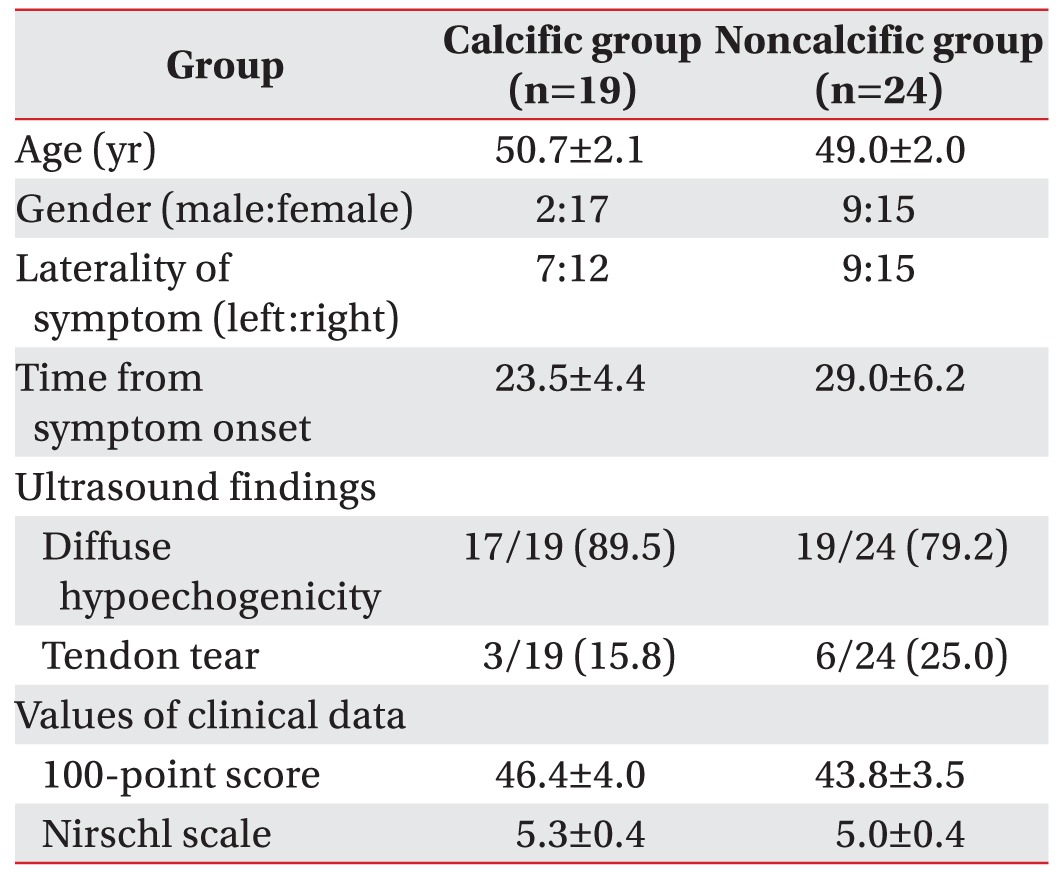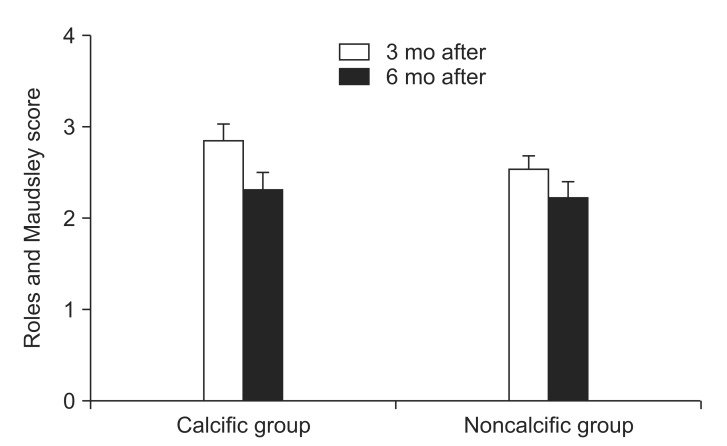1. Tosti R, Jennings J, Sewards JM. Lateral epicondylitis of the elbow. Am J Med. 2013; 126:357.e1–357.e6. PMID:
23398951.

2. Mishra A, Collado H, Fredericson M. Platelet-rich plasma compared with corticosteroid injection for chronic lateral elbow tendinosis. PM R. 2009; 1:366–370. PMID:
19627920.

3. Connell D, Datir A, Alyas F, Curtis M. Treatment of lateral epicondylitis using skin-derived tenocyte-like cells. Br J Sports Med. 2009; 43:293–298. PMID:
19224912.

4. Struijs PA, Spruyt M, Assendelft WJ, van Dijk CN. The predictive value of diagnostic sonography for the effectiveness of conservative treatment of tennis elbow. AJR Am J Roentgenol. 2005; 185:1113–1118. PMID:
16247118.

5. Vicenzino B, Smith D, Cleland J, Bisset L. Development of a clinical prediction rule to identify initial responders to mobilisation with movement and exercise for lateral epicondylalgia. Man Ther. 2009; 14:550–554. PMID:
18838330.

6. Foldager CB, Kearney C, Spector M. Clinical application of extracorporeal shock wave therapy in orthopedics: focused versus unfocused shock waves. Ultrasound Med Biol. 2012; 38:1673–1680. PMID:
22920552.
7. Mouzopoulos G, Stamatakos M, Mouzopoulos D, Tzurbakis M. Extracorporeal shock wave treatment for shoulder calcific tendonitis: a systematic review. Skeletal Radiol. 2007; 36:803–811. PMID:
17415561.

8. Vetrano M, d'Alessandro F, Torrisi MR, Ferretti A, Vulpiani MC, Visco V. Extracorporeal shock wave therapy promotes cell proliferation and collagen synthesis of primary cultured human tenocytes. Knee Surg Sports Traumatol Arthrosc. 2011; 19:2159–2168. PMID:
21617986.

9. Speed C. A systematic review of shockwave therapies in soft tissue conditions: focusing on the evidence. Br J Sports Med. 2014; 48:1538–1542. PMID:
23918444.
10. Melikyan EY, Shahin E, Miles J, Bainbridge LC. Extracorporeal shock-wave treatment for tennis elbow: a randomised double-blind study. J Bone Joint Surg Br. 2003; 85:852–855. PMID:
12931804.
11. Speed CA, Nichols D, Richards C, Humphreys H, Wies JT, Burnet S, et al. Extracorporeal shock wave therapy for lateral epicondylitis: a double blind randomised controlled trial. J Orthop Res. 2002; 20:895–898. PMID:
12382950.
12. Peters J, Luboldt W, Schwarz W, Jacobi V, Herzog C, Vogl TJ. Extracorporeal shock wave therapy in calcific tendinitis of the shoulder. Skeletal Radiol. 2004; 33:712–718. PMID:
15480643.

13. Chard MD, Cawston TE, Riley GP, Gresham GA, Hazleman BL. Rotator cuffdegeneration and lateral epicondylitis: a comparative histological study. Ann Rheum Dis. 1994; 53:30–34. PMID:
8311552.
14. Wang CJ, Chen HS. Shock wave therapy for patients with lateral epicondylitis of the elbow: a one- to two-year follow-up study. Am J Sports Med. 2002; 30:422–425. PMID:
12016085.
15. Cho BK, Kim YM, Kim DS, Choi ES, Shon HC, Park KJ, et al. Mini-open muscle resection procedure under local anesthesia for lateral and medial epicondylitis. Clin Orthop Surg. 2009; 1:123–127. PMID:
19885046.

16. Nirschl RP. Elbow tendinosis/tennis elbow. Clin Sports Med. 1992; 11:851–870. PMID:
1423702.

17. Clarke AW, Ahmad M, Curtis M, Connell DA. Lateral elbow tendinopathy: correlation of ultrasound findings with pain and functional disability. Am J Sports Med. 2010; 38:1209–1214. PMID:
20335508.
18. Al-Abbad H, Simon JV. The effectiveness of extracorporeal shock wave therapy on chronic Achilles tendinopathy: a systematic review. Foot Ankle Int. 2013; 34:33–41. PMID:
23386759.
19. Han SH, Lee JW, Guyton GP, Parks BG, Courneya JP, Schon LC. J.Leonard Goldner Award 2008. Effect of extracorporeal shock wave therapy on cultured tenocytes. Foot Ankle Int. 2009; 30:93–98. PMID:
19254500.
20. Carcia CR, Scibek JS. Causation and management of calcific tendonitis and periarthritis. Curr Opin Rheumatol. 2013; 25:204–209. PMID:
23370373.

21. Harniman E, Carette S, Kennedy C, Beaton D. Extracorporeal shock wave therapy for calcific and noncalcific tendonitis of the rotator cuff: a systematic review. J Hand Ther. 2004; 17:132–151. PMID:
15162101.

22. Haake M, Deike B, Thon A, Schmitt J. Value of exact focusing of extracorporeal shock waves (ESWT) in therapy of tendinitis calcarea: a prospective randomized study. Biomed Tech (Berl). 2001; 46:69–74. PMID:
11324149.
23. Hashimoto T, Nobuhara K, Hamada T. Pathologic evidence of degeneration as a primary cause of rotator cuff tear. Clin Orthop Relat Res. 2003; 415:111–120. PMID:
14612637.

24. Galliani I, Columbaro M, Ferri S, Valmori A, Cassiani G, Falcieri E. A case of calcific lateral epicondylitis: a histological and ultrastructural study. Br J Rheumatol. 1998; 37:235–236. PMID:
9569087.







 PDF
PDF ePub
ePub Citation
Citation Print
Print




 XML Download
XML Download